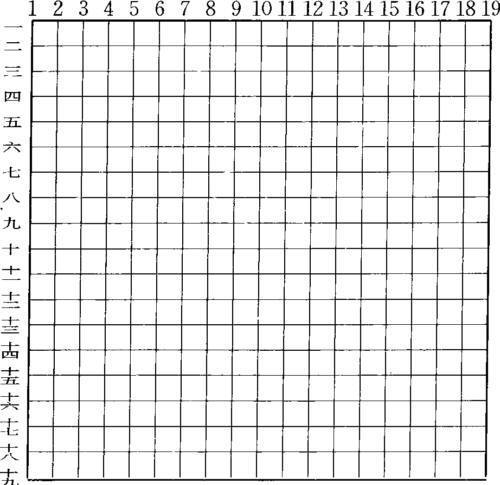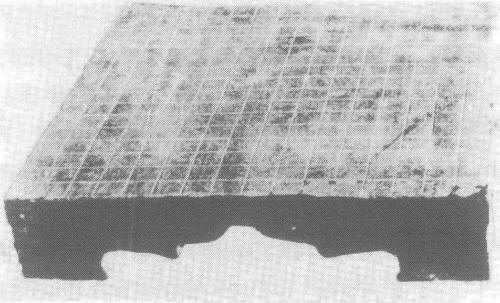Chapter 2 Section 2 Ancient Go Board
The go board of my country's current chess system is a square board of 19 * 19 lanes.According to textual research, such a 19-way chessboard has been adopted in the Eastern Han Dynasty of my country, but it was really widely adopted after the Tang and Song Dynasties.From before the Tang Dynasty to the Eastern Han Dynasty, it was a crossover period. At that time, there were both 19 and 17 Go boards.Before the Western Han Dynasty, dating back to the Spring and Autumn and Warring States period, chessboards with 17 lanes were mainly popular.Before adopting the 17-way Go board, there were also 11, 13 and 15-way Go boards in the history of the development of Go in my country.This can be confirmed from the Go board unearthed from ancient tombs.In short, while the chess system of Go has experienced the evolution from simple to complex, the Go board has also experienced the transformation from small to large, from 11, 13, 15, 17 to 19.

my country's current Go board (19×19 lanes)
The pottery pots unearthed in Yuanyangchi, Yongchang County, Gansu Province at the end of the primitive society are painted with black, red and even colored striped patterns. The lines are uniform, crisscross, and the grid is neat. The shape is very similar to a Go board.But there are only 10 to 13 vertical and horizontal lines, not 19 like now.Some archaeologists call this a checkerboard pattern.Based on this, it is speculated that Go, which has a long history in my country, was produced at the end of primitive society, and the board used at that time may have 10 to 13 lanes.
According to Japanese magazine reports, there was a kind of chess game in ancient Hawaii. In 1977, in an ancient tomb of the Liao Dynasty excavated in Inner Mongolia, a square Go table was unearthed, 10 centimeters high and 40 centimeters long on each side.A Go board with a length and width of 30 cm is drawn on the table.There are 13 vertical and horizontal chessboards, 71 black pieces and 73 white pieces, totaling 144 pieces.There are also eight sunspots and three whites left empty.
The 11 Go boards discovered in Hawaii and the 13 Go boards unearthed in the ancient tombs of the Liao Dynasty in my country are all the same as the checkerboard patterns on the pottery pots of the primitive commune era in my country. It seems that they are the remains of the two oldest Go boards in China.
In 1971, an ancient tomb of the Tang Dynasty was discovered in Chengguan Town, Xiangyin County, Hunan Province. The burial object in the tomb included a Go board, square, with 15 vertical and horizontal lines.This is also the remains of a kind of Go board in ancient my country.
According to the research of chess historians, the 19-way chessboard in my country has a history of nearly two thousand years since it became popular in the Eastern Han Dynasty, and the 17-way chessboard dates back to the Western Han Dynasty, and its existence also has a history of more than one thousand years.As for the 11-way, 13-way and 15-way Go boards, as the predecessor of the 17-way Go board, of course, it has experienced thousands of years of development history.
The ancient Go board in the above archaeological discoveries is enough to show that Go has already taken shape in the primitive society of our country.At that time, the criss-cross checkerboard figure has basically been formed.In addition, judging from the development and transformation process of the 13 and 15 moves of the unearthed Go board, the later popular 17 moves, and the 19 moves that are commonly used today, Go has gone through a process from simple to complex, from few pieces to many, and the way to play. The process of development and change from single to multiple.In the development process of more than 4000 years, the wisdom and experience of countless Go lovers have been accumulated, and the continuous creation and improvement have finally formed the perfect Go as it is today.

A Stone Go Board Unearthed from an Ancient Tomb of the Eastern Han Dynasty

my country's current Go board (19×19 lanes)

A Stone Go Board Unearthed from an Ancient Tomb of the Eastern Han Dynasty
